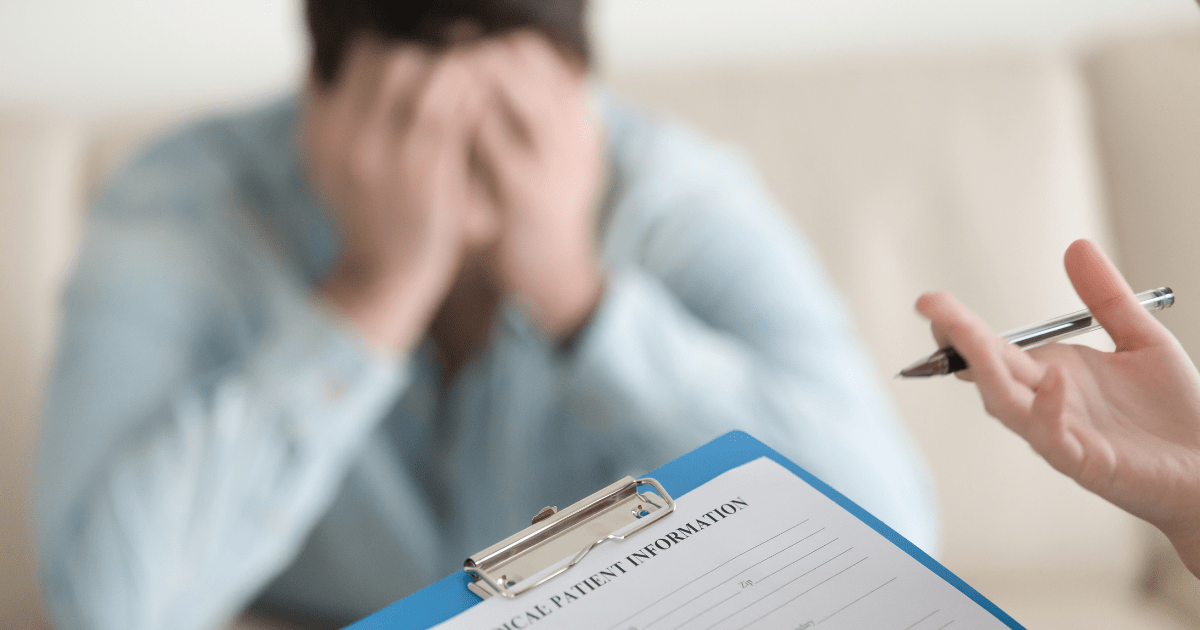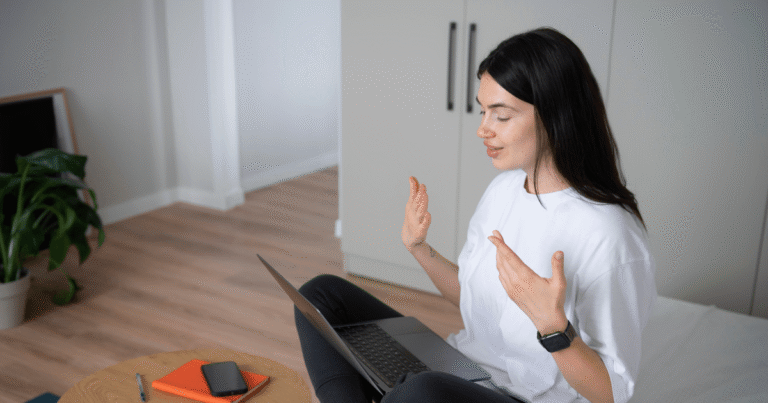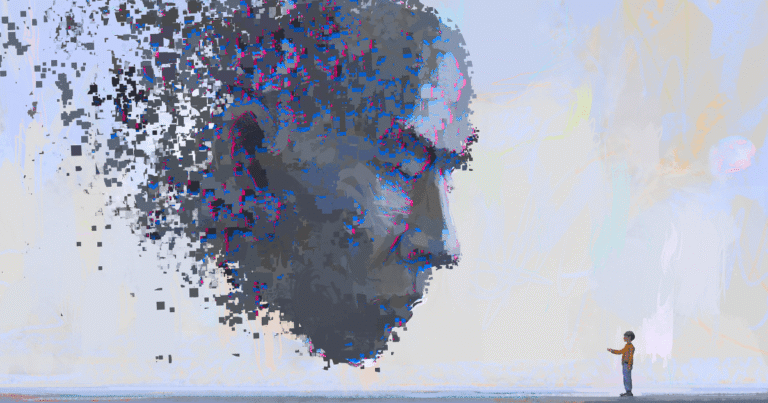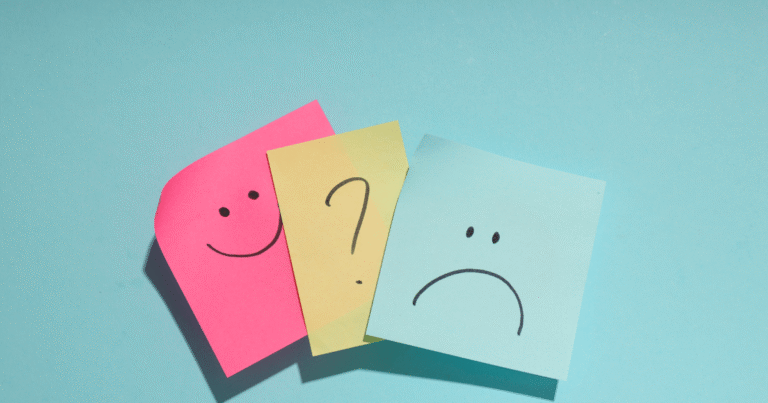Social Anxiety Disorder Case Study: How Anna Overcame Severe Workplace Anxiety in 16 Weeks
A detailed clinical case study showing the journey from debilitating social anxiety to professional confidence through evidence-based CBT treatment.
Understanding Social Anxiety Disorder Through Real Clinical Experience
Social anxiety disorder (SAD) affects over 15 million American adults, making it the third most common mental health condition. While statistics provide context, real stories like Anna’s help us understand the true impact of social anxiety and the remarkable recovery possible through proper treatment.
This comprehensive case study follows Anna, a 23-year-old graphic designer, through her complete treatment journey – from near job loss due to severe social anxiety to successfully presenting to colleagues and feeling confident in professional settings.
Meet Anna: A Typical Social Anxiety Disorder Presentation
Client Background and Initial Presentation
Anna’s Profile:
- Age: 23 years old
- Occupation: Junior Graphic Designer at mid-sized marketing agency
- Background: Recent college graduate in first full-time professional role
- Previous self-perception: “Shy” and “introverted” but manageable
- Current situation: Anxiety significantly worsened in professional environment
The Crisis That Led to Treatment
Anna sought therapy when her career was in jeopardy. Despite producing excellent design work, her manager was considering placing her on a performance improvement plan due to:
- Consistent avoidance of team meetings and collaborative sessions
- Refusal to present her creative ideas to clients or colleagues
- Appearing “unapproachable” to team members and avoiding workplace relationships
- Frequent sick days on presentation or meeting days
The final catalyst was a simple team lunch invitation to welcome a new hire. Anna spent the entire morning experiencing severe physical symptoms – nausea, dizziness, and panic – before making an excuse and leaving work. She recognized her reaction was “illogical” but felt completely powerless to control it.
Clinical Assessment: Identifying Social Anxiety Disorder Symptoms
Anna’s social anxiety manifested across three critical domains that mental health professionals use to diagnose and treat the condition:
1. Cognitive Symptoms (Thought Patterns)
Fear of Negative Evaluation: Anna constantly believed colleagues were judging her as “incompetent” or “boring.” She was convinced that speaking up would result in ridicule and professional embarrassment.
Catastrophizing: She imagined worst-case scenarios, particularly being fired for stumbling over words during presentations or being exposed as inadequate in front of clients.
Mind-Reading Without Evidence: Anna assumed others were thinking negative thoughts about her without any actual proof. Common thoughts included: “They can all see how nervous I am; they think I’m a mess.”
2. Physiological Symptoms (Physical Reactions)
In feared social situations, Anna experienced intense physical symptoms including:
- Cardiovascular: Racing heart and shortness of breath
- Neurological: Trembling hands and dizziness
- Dermatological: Blushing and excessive sweating
- Gastrointestinal: Nausea and upset stomach before social events
- Overall: Fight-or-flight response triggered by routine workplace interactions
3. Behavioral Symptoms (Avoidance and Safety Behaviors)
Avoidance Behaviors:
- Skipping team meetings and company social events
- Refusing to make phone calls or present ideas
- Avoiding eating in the office breakroom or common areas
- Taking sick days to escape speaking requirements
Safety Behaviors When Avoidance Wasn’t Possible:
- Obsessive mental rehearsal of sentences and conversations
- Deliberate avoidance of eye contact with colleagues
- Speaking in barely audible whispers
- Holding folders or coffee cups with both hands to hide visible trembling
Professional Assessment and Diagnosis Process
Clinical Interview and Evaluation
Anna’s therapist conducted a comprehensive clinical interview to gather:
- Symptom history: Anna reported feeling this way since middle school, with significant worsening in professional settings
- Duration and severity: Daily symptoms that substantially impaired work performance and career progression
- Impact assessment: How social anxiety affected relationships, job performance, and overall quality of life
Standardized Assessment Tools
Liebowitz Social Anxiety Scale (LSAS): Anna scored 98 points, placing her in the “very severe” social anxiety category. This standardized tool measures both fear and avoidance across various social and performance situations.
DSM-5 Diagnosis
Based on comprehensive evaluation, Anna met full criteria for Social Anxiety Disorder (Social Phobia). The “Performance Only” specifier was ruled out because her fears extended beyond presentations to general social interactions like team lunches and casual workplace conversations.
Evidence-Based Treatment: 16-Week CBT Protocol
Anna’s treatment followed a structured Cognitive Behavioral Therapy (CBT) approach, considered the gold standard for social anxiety disorder treatment.
Phase 1: Psychoeducation (Sessions 1-2)
Treatment Goals:
- Understanding the CBT model of social anxiety
- Learning how thoughts, feelings, and behaviors create self-perpetuating cycles
- Normalizing symptoms and building treatment motivation
Key Outcomes: Anna felt validated learning that her symptoms were common and treatable. Understanding the scientific basis of her condition provided hope and reduced self-blame.
Phase 2: Cognitive Restructuring (Sessions 3-7)
Treatment Focus:
- Identifying automatic negative thoughts (“They all think I’m stupid”)
- Learning to treat anxious thoughts as hypotheses, not facts
- Developing evidence-based thinking patterns
- Completing thought records to practice new cognitive skills
Therapeutic Techniques:
- Thought challenging: Examining evidence for and against catastrophic predictions
- Cognitive reframing: Developing balanced, realistic thought patterns
- Homework assignments: Daily thought records to track progress
Phase 3: Exposure Therapy (Sessions 8-15)
The Core Treatment Component:
Exposure therapy was the most crucial element of Anna’s recovery. Her therapist created a personalized “fear hierarchy” – a list of feared situations ranked from least to most anxiety-provoking.
In-Session Exposures:
- Role-playing conversations with colleagues
- Practicing presentations in a safe therapeutic environment
- Rehearsing phone calls and workplace interactions
Real-World Exposure Homework:
Week 1-2: Low-stakes phone calls (ordering takeout, calling businesses for information)
Week 3-4: Eating lunch in the office breakroom instead of alone at desk
Week 5-6: Asking colleagues work-related questions and engaging in brief conversations
Week 7-8: Contributing one sentence or comment during team meetings
Week 9-10: Giving 2-minute project updates to direct manager
Critical Treatment Rule: Anna was instructed to eliminate all safety behaviors during exposures – making eye contact, speaking clearly and audibly, and resisting the urge to hide or minimize her presence.
Phase 4: Relapse Prevention (Session 16)
Final Session Goals:
- Reviewing treatment progress and celebrating achievements
- Developing long-term strategies for maintaining gains
- Creating action plans for managing future anxiety challenges
- Building confidence for independent anxiety management
Treatment Outcomes: Measuring Anna’s Recovery
Quantitative Results
Liebowitz Social Anxiety Scale (LSAS) Scores:
- Pre-treatment: 98 (very severe social anxiety)
- Post-treatment: 25 (no social anxiety range)
- Improvement: 74-point reduction (76% symptom reduction)
Qualitative Improvements
Professional Performance:
- Regular attendance at team meetings without avoidance
- Successfully delivered a 5-minute presentation on design projects
- Improved colleague relationships and workplace integration
- Eliminated performance improvement plan concerns
Psychological Changes:
- Reduced anticipatory anxiety from “overwhelming dread” to normal nervousness
- Increased self-confidence in professional abilities
- Better emotional regulation during social situations
- Enhanced sense of connection with coworkers
Physical Symptom Resolution:
- Elimination of severe nausea and dizziness before meetings
- Reduced trembling and sweating during presentations
- Improved sleep quality (no longer lying awake worrying about next-day interactions)
Understanding Why CBT Works for Social Anxiety Disorder
The Science Behind Cognitive Behavioral Therapy
Cognitive Component: CBT helps identify and challenge the distorted thought patterns that fuel social anxiety. By learning to question catastrophic predictions and develop balanced thinking, individuals like Anna can break the cycle of anticipatory anxiety.
Behavioral Component: Exposure therapy is based on habituation – the natural process by which anxiety decreases through repeated, safe contact with feared situations. Each successful exposure provides evidence that contradicts catastrophic predictions.
Integration: The combination of cognitive work and behavioral experiments creates lasting change by addressing both the thoughts that trigger anxiety and the avoidance behaviors that maintain it.
Why Anna’s Treatment Was Successful
Structured Approach: The 16-week protocol provided clear phases and measurable goals, helping Anna track progress and maintain motivation.
Graduated Exposure: Starting with manageable challenges and gradually increasing difficulty prevented overwhelming Anna while building confidence.
Elimination of Safety Behaviors: Removing subtle avoidance strategies (like avoiding eye contact) allowed Anna to learn that she could handle social situations without protective behaviors.
Real-World Practice: Homework assignments ensured that therapeutic gains transferred to Anna’s actual work environment.
Social Anxiety Disorder: Clinical Facts and Statistics
Prevalence and Demographics
- 15 million American adults affected annually (6.8% of population)
- Third most common mental health condition after depression and alcohol dependence
- Typical onset: Early to mid-teens (average age 13)
- Gender distribution: Slightly more common in women (ratio approximately 3:2)
- Workplace impact: 70% report significant impairment in work or school settings
Economic Impact
- $42.3 billion annual economic burden in the United States
- Average 10 days of work missed per year due to symptoms
- 41% lower lifetime earnings compared to individuals without social anxiety
- Higher healthcare utilization due to physical symptoms and comorbid conditions
Comorbidity Rates
Social anxiety disorder frequently occurs alongside other mental health conditions:
- Depression: 41.4% comorbidity rate
- Generalized Anxiety Disorder: 23.1% comorbidity rate
- Specific Phobias: 20.6% comorbidity rate
- Substance Use Disorders: 16.8% comorbidity rate (often self-medication)
Professional Treatment Options for Social Anxiety Disorder
Evidence-Based Therapies
Cognitive Behavioral Therapy (CBT):
- Effectiveness: 70-80% of patients show significant improvement
- Duration: Typically 12-20 sessions
- Focus: Changing thought patterns and eliminating avoidance behaviors
- Long-term benefits: Skills remain effective years after treatment completion
Acceptance and Commitment Therapy (ACT):
- Approach: Learning to accept anxiety while pursuing meaningful goals
- Effectiveness: Comparable to CBT for many individuals
- Focus: Psychological flexibility and values-based living
Group Therapy:
- Benefits: Real-time social practice and peer support
- Format: 8-12 week structured programs
- Effectiveness: Often as effective as individual therapy
Medication Options
Selective Serotonin Reuptake Inhibitors (SSRIs):
- First-line medications: Sertraline, paroxetine, fluvoxamine
- Effectiveness: 50-65% response rate
- Timeline: 6-12 weeks for full effect
Beta-Blockers:
- Use: Performance anxiety (presentations, public speaking)
- Mechanism: Reduces physical symptoms like trembling and rapid heartbeat
- Timing: Taken 30-60 minutes before feared situation
Combination Treatment: Research shows that combining therapy and medication often produces the best outcomes, particularly for severe cases like Anna’s initial presentation.
When to Seek Professional Help for Social Anxiety
Red Flag Indicators
Career and Academic Impact:
- Avoiding job interviews, presentations, or networking opportunities
- Declining performance due to inability to participate in meetings or collaborate
- Changing academic or career paths to avoid social requirements
Relationship Difficulties:
- Isolation from friends, family, or romantic partners
- Difficulty forming new relationships or maintaining existing ones
- Avoiding social events, parties, or group activities
Physical and Mental Health Concerns:
- Panic attacks in social situations
- Depression or hopelessness about social abilities
- Substance use to cope with social situations
- Physical symptoms affecting daily functioning
Quality of Life Impairment:
- Feeling like social anxiety controls major life decisions
- Missing important life events (weddings, graduations, celebrations)
- Chronic loneliness despite wanting social connections
Recovery Resources and Next Steps
Finding Qualified Mental Health Professionals
Therapist Selection Criteria:
- Specialized training in anxiety disorders
- Experience with CBT and exposure therapy techniques
- Licensed clinical psychologist, licensed clinical social worker, or psychiatrist
- Positive patient reviews and evidence-based treatment approaches
Professional Directories:
- Psychology Today: Comprehensive therapist database with specializations
- Anxiety and Depression Association of America (ADAA): Provider directory
- Association for Behavioral and Cognitive Therapies: CBT specialist listings
Self-Help Resources While Seeking Treatment
Educational Materials:
- “The Anxiety and Phobia Workbook” by Edmund Bourne
- “Mind Over Mood” by Dennis Greenberger and Christine Padesky
- ADAA website resources and fact sheets
Apps for Anxiety Management:
- Sanvello: CBT-based anxiety tracking and coping skills
- MindShift: Exposure therapy exercises and anxiety management
- Headspace: Meditation and mindfulness for anxiety reduction
Online Support Communities:
- ADAA online support groups
- Reddit communities (r/socialanxiety, r/anxiety)
- 7 Cups free emotional support platform
Crisis and Immediate Support Resources
National Crisis Lines:
- National Suicide Prevention Lifeline: 988
- Crisis Text Line: Text HOME to 741741
- SAMHSA National Helpline: 1-800-662-4357
Emergency Situations: If you’re experiencing thoughts of self-harm or substance abuse related to social anxiety, please contact emergency services or go to your nearest emergency room immediately.
Key Takeaways from Anna’s Social Anxiety Recovery Journey
Hope for Recovery
Anna’s case demonstrates that even severe social anxiety disorder is highly treatable with proper intervention. Her journey from near job loss to professional confidence occurred in just 16 weeks of structured treatment.
The Importance of Professional Treatment
While self-help strategies can be valuable, Anna’s dramatic improvement required professional guidance, particularly for exposure therapy. The structured approach and therapeutic support were crucial for her willingness to face feared situations.
Recovery Is Not Perfection
Anna still experiences normal nervousness before presentations – the goal of treatment isn’t to eliminate all social anxiety, but to reduce it to manageable levels that don’t impair functioning or quality of life.
Early Intervention Matters
Although Anna experienced symptoms since middle school, she didn’t seek treatment until her career was threatened. Earlier intervention might have prevented years of unnecessary suffering and limitation.
Conclusion: Social Anxiety Disorder Treatment Success
Anna’s case study illustrates the remarkable potential for recovery from social anxiety disorder through evidence-based treatment. Her transformation from a young professional hiding in bathroom stalls to confidently presenting her work demonstrates that social anxiety, no matter how severe, doesn’t have to define or limit your life.
If you recognize yourself in Anna’s story – whether experiencing similar workplace challenges, avoiding social situations, or feeling overwhelmed by the physical symptoms of anxiety – remember that effective help is available. Social anxiety disorder is one of the most treatable mental health conditions, with success rates of 70-80% for individuals who complete evidence-based therapy.
The journey from social anxiety to social confidence is possible. Anna’s story is proof that with the right treatment, support, and commitment to facing your fears, you can reclaim your professional life, relationships, and personal freedom from the grip of social anxiety.
Author’s Note: “Anna” is a composite profile created for educational purposes based on common clinical presentations. Her story represents typical symptoms and treatment outcomes but does not identify any specific individual, ensuring complete confidentiality and privacy.
Disclaimer: This case study is provided for educational and informational purposes only. It is not intended as a substitute for professional mental health diagnosis, treatment, or advice. If you’re experiencing symptoms of social anxiety disorder, please consult with a qualified mental health professional for proper assessment and treatment planning.
Keywords: social anxiety disorder case study, CBT for social anxiety, workplace social anxiety, social anxiety treatment outcomes, exposure therapy, cognitive behavioral therapy, social phobia recovery, professional social anxiety help, social anxiety disorder symptoms







